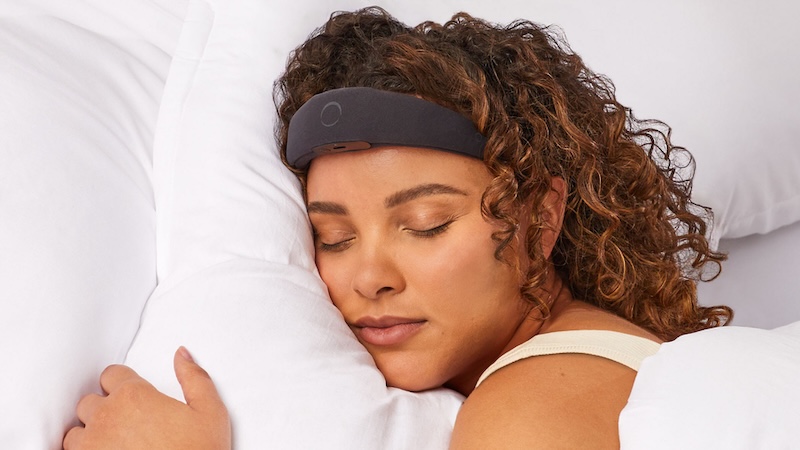
Many people suffer from sleep disorders. To help them, scientists from the USA have developed a new sleep aid: a headband that uses audio signals to help you fall asleep. The backgrounds.
Getting a restful sleep now seems to be a challenge: like an infographic from Statista shows, around 43 percent of people in Germany suffer from sleep disorders. The problem is also known in the USA. To remedy the situation, researchers at MIT have developed a headband that is intended to make it easier for people to fall asleep.
To fall asleep: This headband sends audio signals to the brain
Stress, overwrought nerves and racing thoughts: a sleep disorder can have various causes. Instead of sleeping, many people toss and turn, wishing that their brain would finally rest and they could fall asleep.
This is exactly what MIT wants to achieve with the help of audio signals. The idea for this came about in-house Start-up Elemind: An electroencephalogram (EEG) headband emits acoustic stimulations that are tuned to people’s brain waves. This is supposed to put them into a sleep state more quickly.
To do this, the headband measures brain waves using EEG and feeds the results into Elemind’s proprietary algorithms, which are used to dynamically generate audio via a bone conduction driver. The moment the device detects that someone is sleeping, the sound slowly fades.
Headband to replace sleeping pills
The Elemind team believes the headband has several advantages over sleep aids. For example, that it does not cause any side effects and is not addictive. “There are a number of people who we think would benefit from this device,” explains CEO Meredith Perry.
“Whether it’s a breastfeeding mother who may not want to take sleep medication, someone traveling across different time zones and wanting to combat jet lag, or someone who simply wants to improve their performance the next day and feel more in control of their sleep .”
However, the method is not new: phase-locked stimulation has been used for years in conjunction with electrodes implanted in the brain to interrupt seizures and tremors. The Elemind founders already published a corresponding work on this in 2021.
The data was promising. However, the founders decided to first prove that their approach works in a less regulated area: sleep. A long development process began with the EEG headband as a result.
Headband reduces sleep time by 15 minutes
The research team tested the functionality in a small study with adults who suffered from sleep disorders. A 30-minute stimulation reduced the time it took them to fall asleep by 10 to 15 minutes. Last summer, Elemind also began shipping the product to a small group of people as part of a pilot program.
Various tests in collaboration with other universities have also led to some interesting findings. For example, the approach can reduce essential tremors in Alzheimer’s patients.
Elemind is initially focusing on use for sleep disorders. In the future, however, the MIT start-up wants to develop further solutions – from medical interventions to improving memory and concentration.
Also interesting:
- Research: AI develops more creative ideas than 50 scientists combined
- Studies: These are the 10 best universities in Germany
- Disinformation: 5 Techniques People Use to Deny Science
- Scientists create robots with faces made from living skin
The post Headband sends audio signals to our brain – and is said to help us fall asleep by Beatrice Bode appeared first on BASIC thinking. Follow us too Facebook, Twitter and Instagram.
As a Tech Industry expert, I find the concept of headbands sending audio signals to our brains to help us fall asleep to be quite intriguing. The idea of using technology to improve our sleep is certainly appealing, as sleep is essential for overall health and well-being.
However, I would caution that while this technology may have potential benefits, it is important to approach it with caution and skepticism. The brain is a complex organ, and manipulating it with external signals could potentially have unintended consequences. It would be crucial to conduct thorough research and testing to ensure the safety and effectiveness of such devices.
Additionally, it is important to remember that technology is not a substitute for healthy sleep habits and practices. While a headband may help some individuals fall asleep more easily, it is still important to prioritize good sleep hygiene, such as maintaining a consistent sleep schedule, creating a relaxing bedtime routine, and avoiding screens before bed.
Overall, while the idea of headbands sending audio signals to our brains to help us fall asleep is intriguing, it is important to approach this technology with caution and to prioritize holistic sleep strategies for long-term health and well-being.
Credits